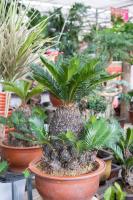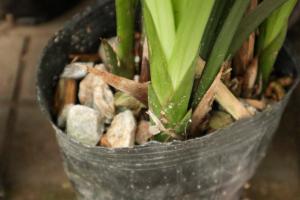Do You Need a Hole in a Plant Pot?
Plant pots are an essential item for gardening enthusiasts. Whether you are growing herbs to add flavor to your dishes, vegetables for your salad, or beautiful flowers to decorate your home, you need a suitable pot to accommodate the plant's growth. One of the most common questions that arise among novice and expert gardeners is whether they need a hole in a plant pot. This article will explore the significance of holes in plant pots and determine whether you need one or not.
The Importance of Drainage Holes
The primary purpose of drainage holes in a plant pot is to enable the free flow of water. Water can easily accumulate in a pot over time, causing the soil to become waterlogged. This excess moisture can lead to root rot, which can ultimately kill your plants. The drainage hole allows the water to escape, ensuring that there is adequate airflow and preventing water from stagnating in the pot.
An appropriate drainage system allows plants to grow healthily by preventing the accumulation of stagnant water, ensuring essential nutrients circulate, and giving roots space to breathe. Without good drainage, the roots can become oxygen-starved, leading to a lack of growth and potentially killing the plant.
What Happens Without Drainage Holes?
When there are no drainage holes in a plant pot, water starts to accumulate at the bottom. This, in turn, increases the soil's saturation, leading to oxygen deficiency and, eventually, plant death. Soil with no drainage is compacted and becomes stagnant. This creates an environment for fungal and bacterial growth, ultimately leading to root rot, which is a death sentence to your plants. Furthermore, excessive moisture can attract pests and cause foul odors.
How to Improve Drainage Without a Hole
If you don't have a pot with a drainage hole available, there are ways to improve drainage. The first option is to create a drainage layer at the bottom of the pot. This can be done by adding a layer of rocks, gravel, or broken pottery beneath the soil. The layer separates the soil from the excess water, allowing it to escape from the bottom while keeping your plant's roots away from the standing water, thus avoiding root rot.
The second option is to monitor your watering habits carefully. Using a pot without a drainage hole requires you to be more cautious about the amount of water you use. After watering the plant, wait a few minutes and then pour out any excess water. This will reduce the risk of waterlogging and, in turn, help prevent root rot.
Conclusion
In summary, a hole in a plant pot is essential for healthy plant growth. Drainage holes allow water to flow freely, preventing soil saturation, promoting adequate oxygenation, and preventing fungal and bacterial growth. Without a proper drainage system, soil becomes compacted and stagnant, leading to root rot and plant death. If you do not have a pot with a drainage hole, you can create a drainage layer at the bottom or carefully monitor your watering habits. So, if you want your plants to live long and prosper, it's critical to ensure suitable drainage for the pot you choose.

 how many times do yo...
how many times do yo... how many planted tre...
how many planted tre... how many pine trees ...
how many pine trees ... how many pecan trees...
how many pecan trees... how many plants comp...
how many plants comp... how many plants can ...
how many plants can ... how many plants and ...
how many plants and ... how many pepper plan...
how many pepper plan...

































